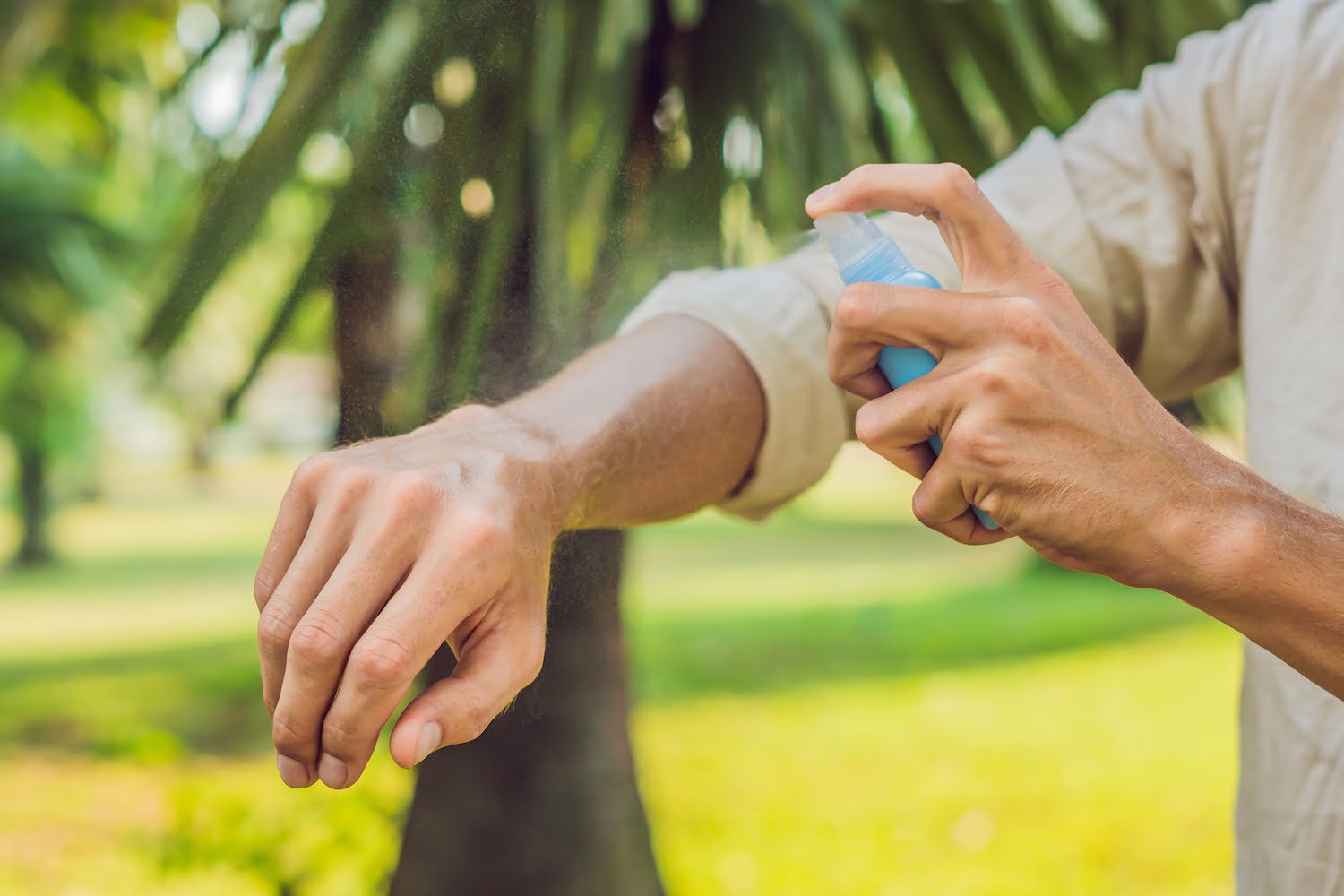
Safe insect repellents that work
We’re at the peak of the tick and mosquito season, as our weather is at its warmest this month. And we are about to start the height of flea season. The warming climate is predicted to expand the habitat of ticks and mosquitos. So insect repellent is definitely needed. But which insect repellents are safe and effective?
Many of my patients who know of my caution in using products containing potentially harmful chemicals have asked me to suggest a safe insect repellent that will provide protection. It is important, for starters, to recognize that there is no perfect and completely safe way to prevent insect bites. However, all repellents are not created equal and you do have options for less toxic approaches.
This is what I usually share when I get asked about bug sprays.
Which ingredients are safe (and at what levels)
My go-to for any products containing chemical ingredients is the Environmental Working Group or EWG. A couple of months back, I shared my thoughts on sunscreen and much of my recommendations came from the research and advocacy of the EWG.
According to the EWG, DEET (at less than 30%), Picaridin (at 20%) and IR3535 (at less than 20%) are the safest, most effective ingredients. All three are found in insect repellents that live up to extensive EPA regulations with data to back up efficacy and safety claims. Here’s a quick primer on all three ingredients:
DEET
This is probably the ingredient you’ve heard of the most. It is rated as very effective in repelling a wide range of mosquitoes, ticks and other bugs. DEET has been used extensively and is a sensible choice for all-day protection. However, it often shows up in repellents at what are considered unsafe levels. DEET has a strong smell, can irritate the eyes and in rare cases can induce neurological damage. The incidents of nervous system damage most often occur after high exposures to DEET. And it’s even been known to melt plastic at these levels!
However, this is why less than 30% concentration is advisable. And really, you can be protected with just 10% for a couple of hours (then reapply). DEET isn’t perfect – but it has a long history of use and minimal safety concerns when used at appropriate levels. The EWG states that it’s a “reasonable choice” when weighed against the consequences of a life-changing disease, with few cases of toxicity in 60 years on the market. But it’s not the only choice you have.
Picaridin
Repellents containing picaridin have been shown to be effective against mosquitos and ticks from eight to 14 hours at a 20% concentration. It’s not an ingredient as widely used as DEET, so the number of studies is fewer…but it evaporates from the skin more slowly than both DEET or IR3535 and may repel bugs for longer periods. Other pros include very low inhalation toxicity, virtually no skin irritation and no stinky odor.
I wish Picaridin had more time on the market (it’s quite new) but it is promising. I also like that at very low concentration, this ingredient can provide minimum of five hours of protection. So you may get what you need with a product that has just 5-10%.
IR3535
With a long presence on the European market, IR3535 provides similar or slightly less efficacy than DEET or Picaridin against mosquitoes. However, it is twice as effective against deer ticks. At the recommended 20% concentration, you’ll get eight hours of mosquito protection and at least six hours of tick protection. But IR3535 can be very irritating to the eyes.
Otherwise, this could be a good choice but I’d recommend against purchasing brands containing added sunscreen (products using IR3535 often have this). Sunscreens require more frequent application…and combo products would overexpose you to the insect repellent.
Do essential oils and botanicals work
In short, they can. However, there is no way to know how effective they are or for how long. In relying on them, you’re likely heading outdoors with a false sense of security that could put you at greater risk than if you were using nothing at all. Repellents that rely on essential oils or botanicals are classified technically as a minimum-risk pesticide – meaning they undergo no significant testing of efficacy. An essential oils/botanical label can say that the substance repels mosquitoes and ticks, but they can’t say it will protect you from Lyme, Zika or any other vector-borne disease.
 Essential oils and botanicals mixtures can be made at home or purchased ready-made. They do offer SOME protection to be sure. But they also evaporate more quickly from the skin. You’ll have to apply more frequently, and again, you’ll get zero protection from some specific illnesses.
Essential oils and botanicals mixtures can be made at home or purchased ready-made. They do offer SOME protection to be sure. But they also evaporate more quickly from the skin. You’ll have to apply more frequently, and again, you’ll get zero protection from some specific illnesses.
They can irritate the skin – or you may find that you are allergic to a specific essential oil or botanical. They are never recommended for young children, due to lack of research. The EWG recommends avoiding all botanically-based repellents if you like in a high-risk area for disease or need long-lasting protection except one: Oil of Lemon Eucalyptus. Repel and Cutter brands have well-known products with Oil of Lemon Eucalyptus as the active ingredient. But again, the protection time is much shorter than DEET or the other chemicals mentioned earlier.
In light of diseases such as Zika and Lyme, the consequences of ineffective repellents can be severe. It’s important to use one that you know works well. Essential oils have no standardized oversight, such as EPA regulations. You may be taking a chance in using them.
How else to repel insects
Thankfully, there are many other tactics for keeping insects at bay aside from what you apply to your body.
For starters, avoid the dusk and dawn in the US, when mosquitoes are the worst. Clear your yard of places where mosquitoes like to breed (particularly any place with standing water). Mosquito netting works well for many spaces such as tents, strollers and on the porch. Always cover up exposed skin as much as possible with long sleeves/pants – and you can spray your clothing rather than your body for some protection. This site had some other ideas you may want to try.
I had a patient recently that wore a dog tick/flea collars around his boots. He said it helps prevent ticks and bugs from getting him when he is working outside. I thought this was brilliant! And it would avoid any risk of toxicity because it isn’t touching the skin.
The bottom line is that we all have to protect ourselves, particularly if we are outside for a long time and in an area prone to insect-born illnesses. The good news is that we have safe insect repellents that are effective. We’ve just got to know the facts and choose our protection wisely!
Dr. Sharman
Photo credit: ID 137875252 © Elizaveta Galitskaya | Dreamstime.com


Write a Comment